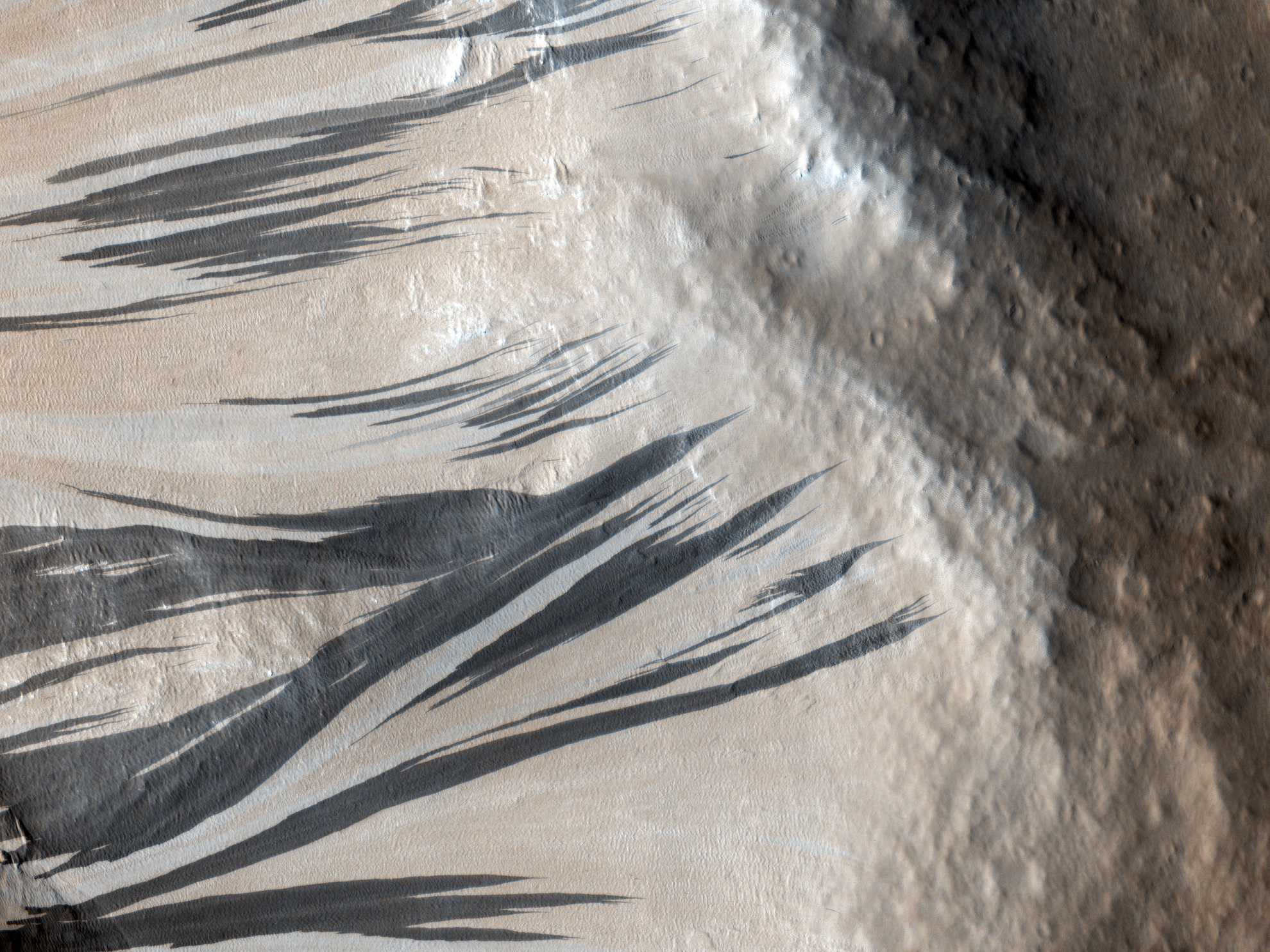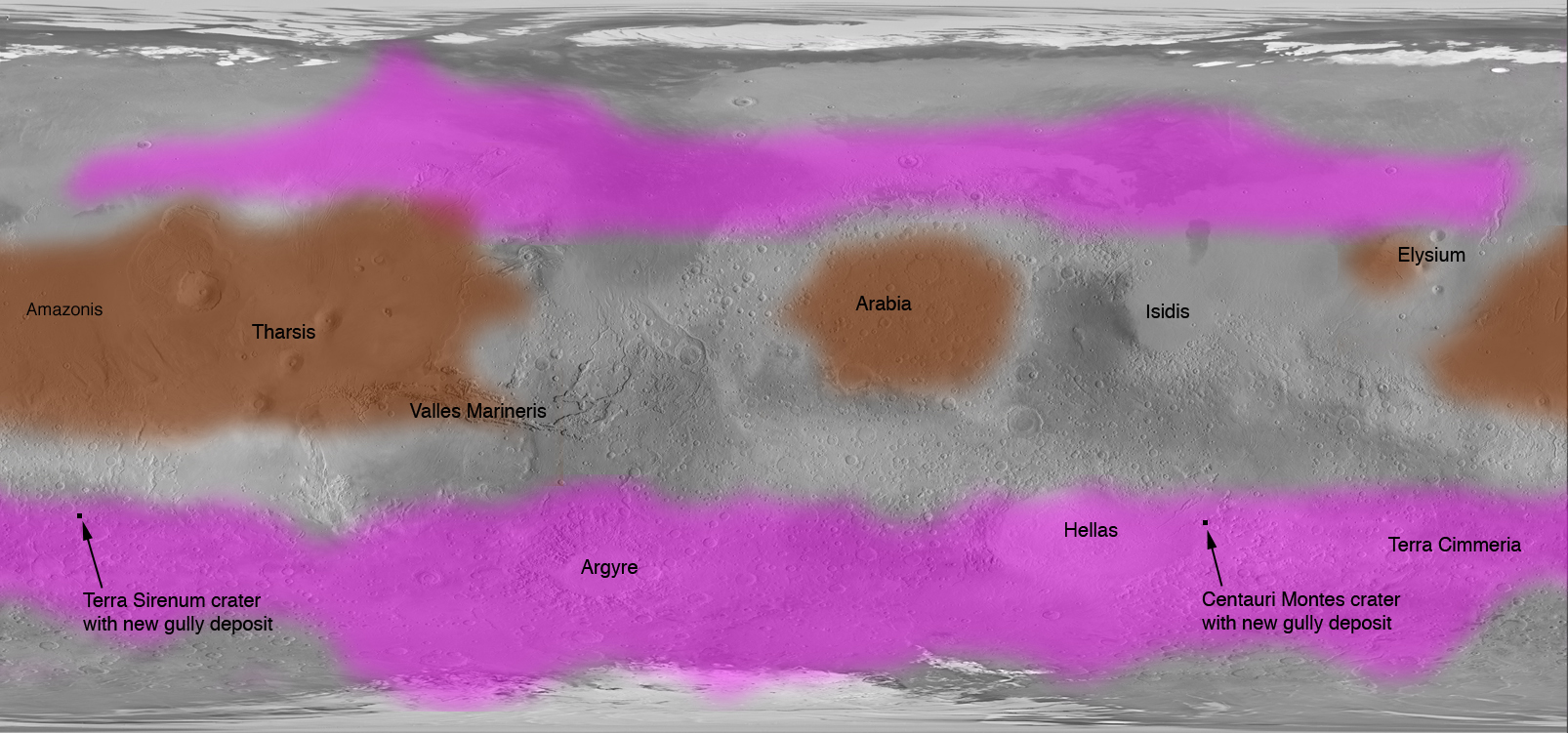New findings indicate that the dark streaks seen on many slopes on Mars are due to go geological water activities.

These formations, slope streaks, as the scientists call them, are characteristic features of the Mars surface. However, the reason to why they form and what they are has been unclear. So far, the predominant explanation has been some kind of dry process, such as dust avalanches.
Thanks to high-resolution images from Mars surface and data from instruments on the NASA Mars Reconnaissance Orbiter, the researchers have reached another conclusion about how these slope streaks form.
By investigating geophysical and geochemical parameters, such as metals, and how chlorine salts can react and absorb water, the researchers found a plausible explanation to how the streaks form.
They reason that they form due to salt solutions that flow in water. At specific temperatures and humidity levels, salts can absorb water vapor from the atmosphere (a process known as deliquescence) and from highly concentrated solutions or saline solutions.
We find: (i) a remarkable coexistence of the slope streak distribution with the regions on Mars with high abundances of water-equivalent hydrogen, chlorine, and iron; (ii) favourable thermodynamic conditions for transient deliquescence and brine development in the slope streak regions; (iii) a significant concurrence of slope streak distribution with the regions of enhanced atmospheric water vapour concentration, thus suggestive of a present-day regolith-atmosphere water cycle; and (iv) terrain preferences and flow patterns supporting a wet mechanism for slope streaks.
And since these streaks are found across the planet, this process happens everywhere on the planet.

The next step is to investigate similar locations on Earth, very cold and dry places in the Himalayas, the Andes, and Iceland.
Reference:
Anshuman Bhardwaj, Lydia Sam et al. Martian slope streaks as plausible indicators of transient water activity doi:10.1038/s41598-017-07453-9






















